Flat Feet Treatment in Thane at Pinnacle Orthocentre Hospital
Flat feet, also known as fallen arches, is a common condition in which the arches of the feet are flattened, causing the entire sole of the foot to make contact with the ground.
If you or your child is experiencing discomfort or instability due to flat feet, Pinnacle Orthocentre Hospital is here to provide comprehensive flat feet treatment in Thane.
Our team of experienced surgeons and specialists offers personalized care to restore stability and mobility to your feet.
Understanding Flat Feet:
Flat feet can occur due to various factors, including genetics, foot deformities, or weakened ligaments and tendons.
It can lead to symptoms such as foot pain, fatigue, and difficulty in activities that require prolonged standing or walking.
The sole of our foot is usually not flat. It has a central arch (Figure 1).
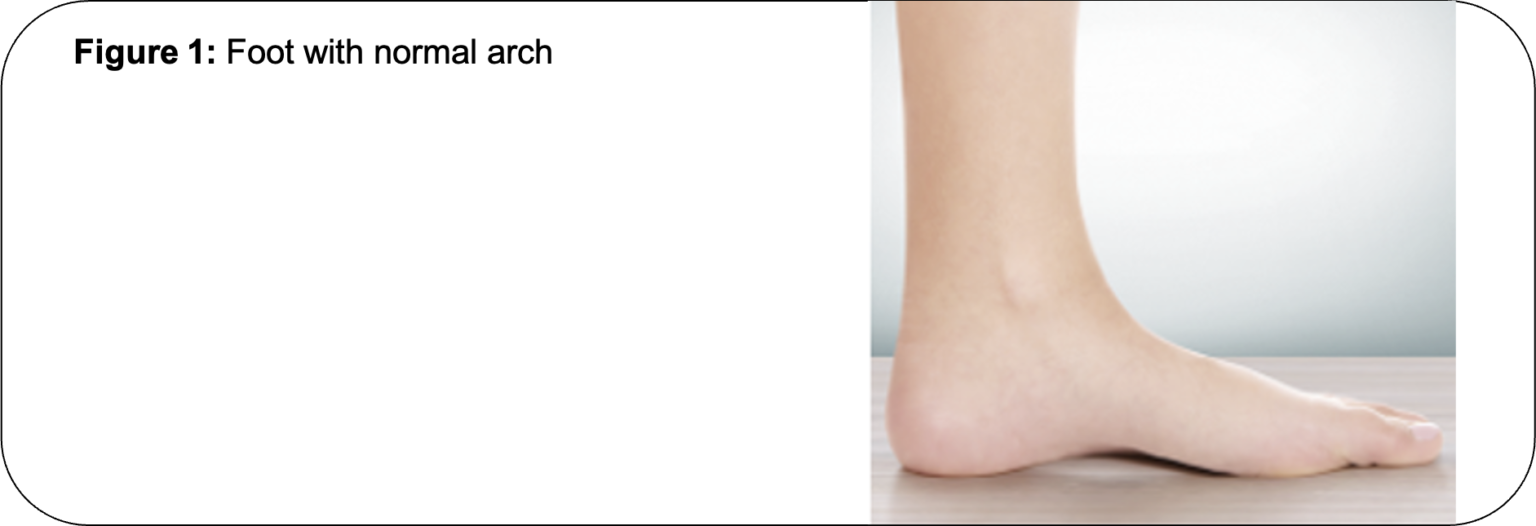
A flat foot is a condition in which the arch of the foot is absent and the sole is flat (Figure 2). Flat feet are extremely common in young children (1 to 5 years ago). The majority of these children develop normal arches as they grow up.

When a child with flat feet is assessed in a standing position, the foot is seen to “ROLL OUTWARDS” (OUT-TOEING) (Figure 3).
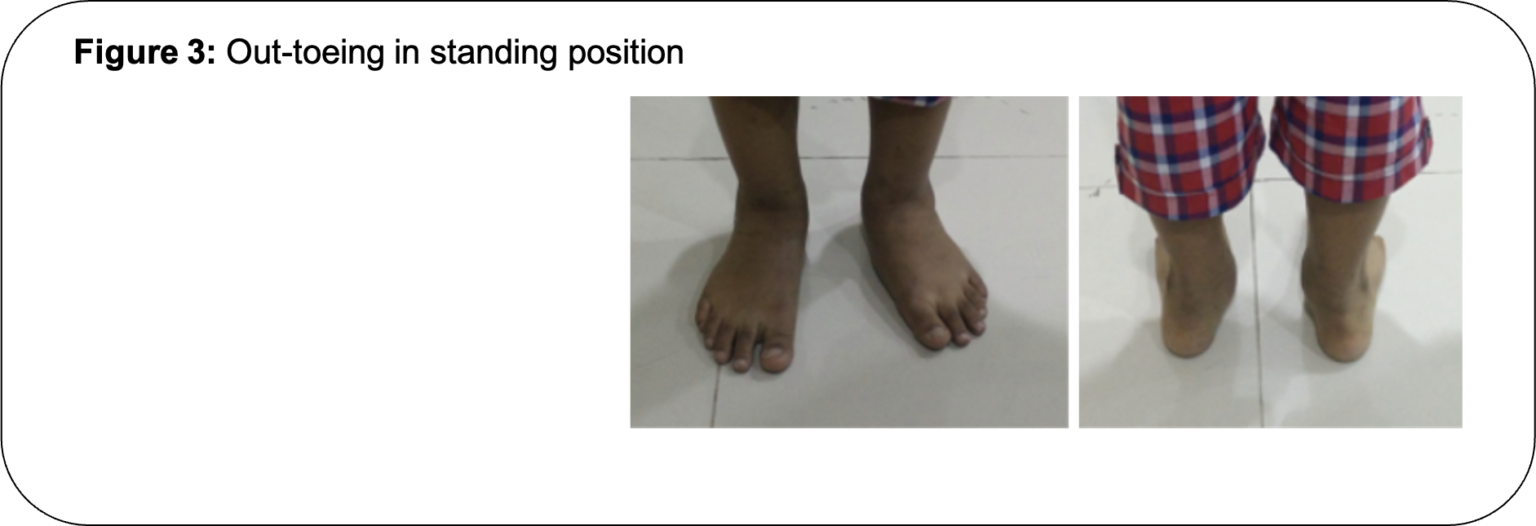
Types of flat feet:
Broadly, flat feet are of two types:
1-Flexible flatfeet:
Inflexible flat feet, the foot appears flat when the child is standing (Figure 4). However, the arch reforms when the foot is assessed with the child not bearing weight (Figure 5).
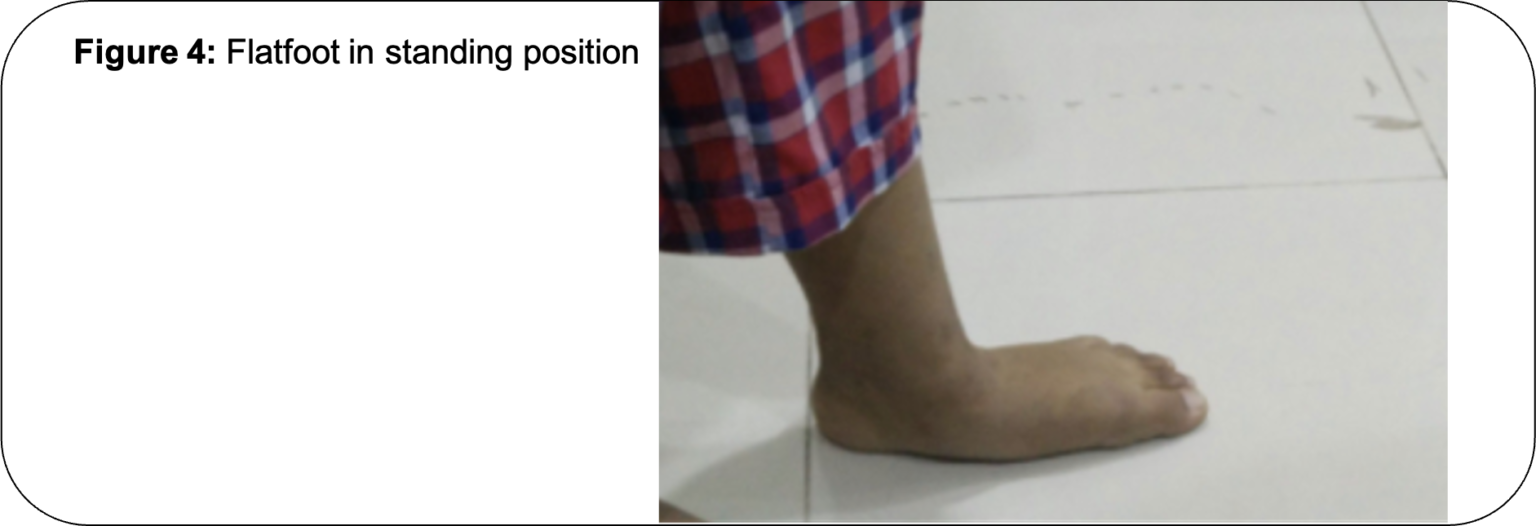
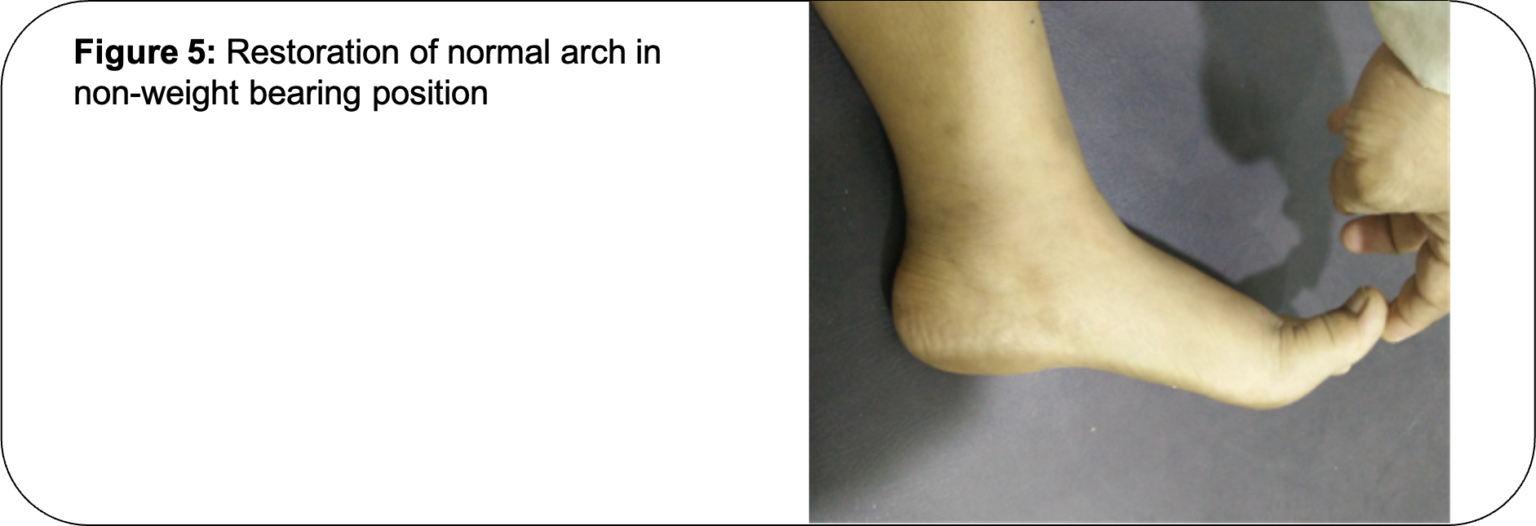
2-Rigid flatfoot:
Rigid flatfoot is a more severe deformity in which the foot is flat in standing as well as non-weight-bearing position. It occurs due to underlying bony abnormality like a rocker-bottom foot in newborn babies, or, the tarsal coalition in adolescents (Figure 6, 7).
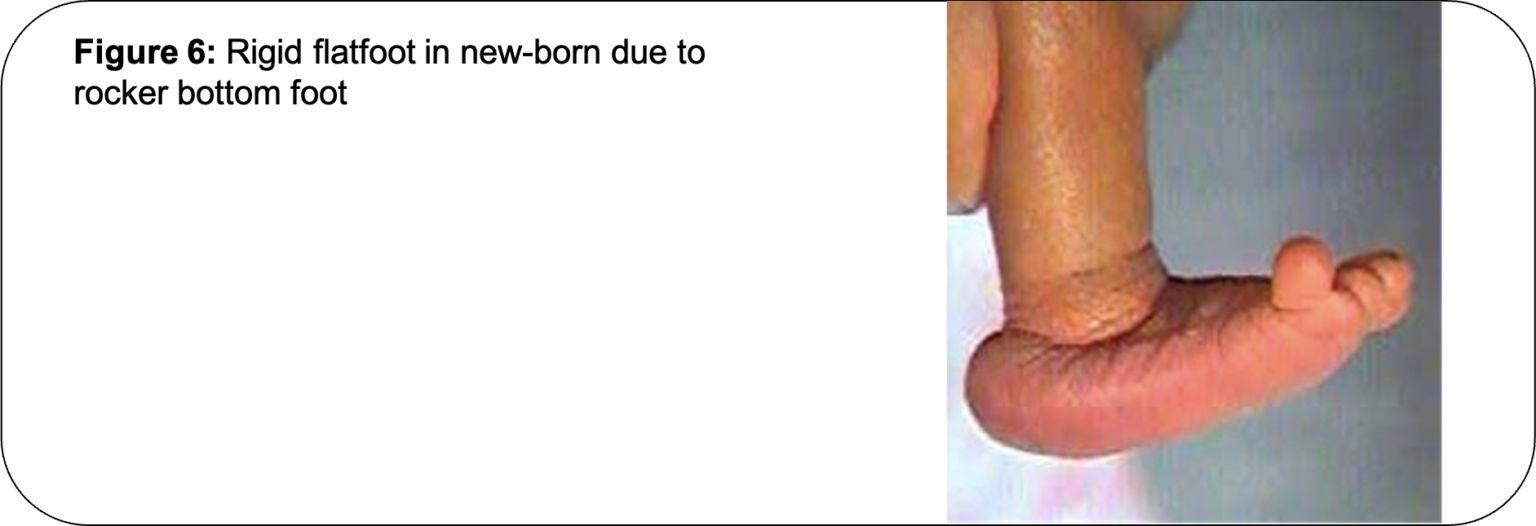
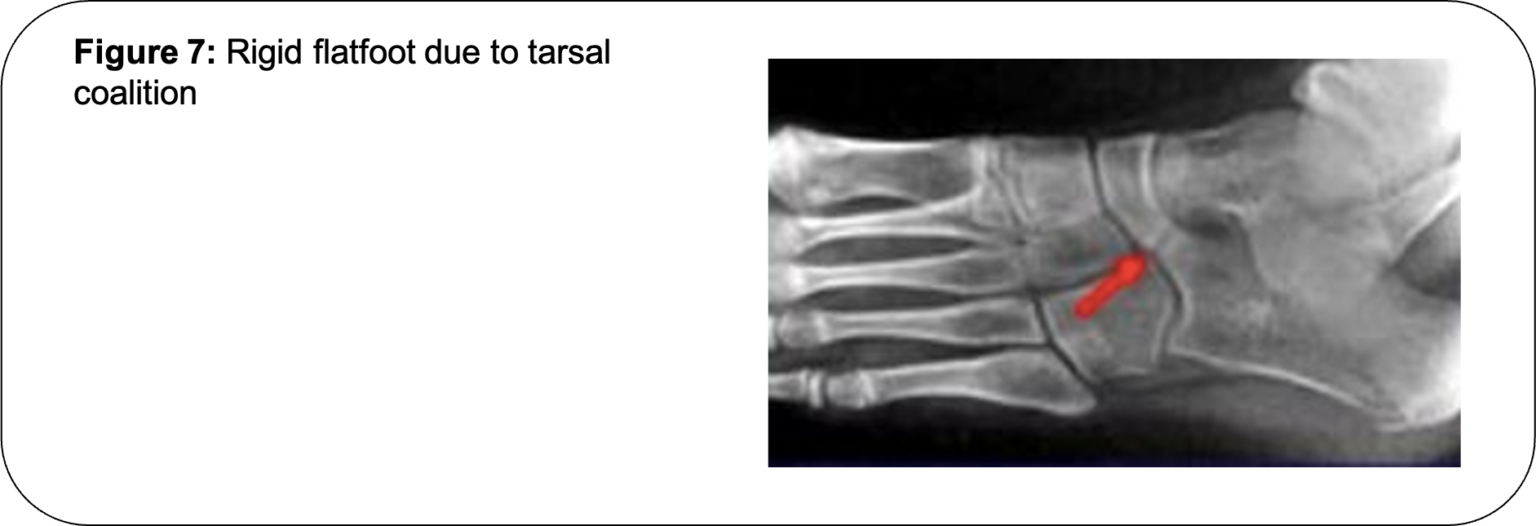
Diagnosis:
Flexible Flatfoot is diagnosed on clinical examination. However, in rigid cases, X-rays are needed to look for bony abnormalities.
Treatment of Flexible flatfoot:
Flexible flat feet are not pathological and in the majority of cases require no specific treatment.
If the child has no symptoms (pain, fatigue, difficulty in wearing shoes), parental counseling and reassurance are all that is required. In the majority of cases, children with flexible flatfeet develop a strong arch by the age of 10 years.
Exercises: Few children have tight heel cords and they may be benefited from exercises to stretch the tight muscles.
Shoes: Sports shoes are usually preferred for children with flexible flatfeet.
Insoles/ orthoses: Insoles/ braces/ splints are often prescribed for children with flexible flatfoot and foot pain. However, in reality, there are no scientific studies that show the beneficial effect of insoles/ orthoses inflexible flatfeet.
In fact, some studies show poorer patient-reported outcomes in children who wear insoles/ orthoses as compared to children who don’t wear orthoses.
We usually avoid prescribing insoles/ orthoses for children with flexible flatfeet.
Surgery: In flexible flatfoot, surgical correction is reserved for severe cases in children beyond the age of 10 years, who have symptoms in form of foot pain and difficulty in shoe wear.
However, in clinical practice, such cases are extremely rare.
Rigid flatfoot:
Rigid flatfoot is a distinct clinical entity from flexible flatfoot. Rigid flatfoot usually needs surgical treatment. The nature of the surgery depends on the underlying bony abnormality.
Outcomes:
There are many professional athletes who have flexible flatfeet. Flexible flatfeet will not stop your child from participating in any sport or exclude them from any job.
The outcome of treatment of rigid flatfoot depends on the nature and severity of underlying pathology.
Why Choose Pinnacle Orthocentre Hospital for Flat Feet Treatment?
1-Flat Feet Treatment Hospital in Thane: Pinnacle Orthocentre Hospital is a trusted destination for flat feet treatment in Thane.
Our state-of-the-art facilities and dedicated team of specialists ensure the highest quality of care for patients with flat feet.
2-Flat Feet Treatment Surgeons in Thane: Our hospital boasts a team of experienced and skilled flat feet treatment surgeons in Thane. They have extensive expertise in diagnosing and treating flat feet, providing personalized treatment plans to meet each patient’s unique needs.
3-Best Doctors for Flat Feet Treatment in Thane: Our hospital is home to the best doctors specializing in flat feet treatment. They stay up-to-date with the latest advancements in the field and employ evidence-based practices to deliver exceptional care to our patients.
4-Comprehensive Approach: We take a comprehensive approach to flat feet treatment, focusing on addressing the underlying causes and alleviating symptoms.
Our team works closely with patients to develop individualized treatment plans, ensuring the best possible outcomes.
If you or your child is seeking effective flat feet treatment, trust the expertise of Pinnacle Orthocentre Hospital.
Our experienced surgeons and dedicated medical team are committed to restoring stability and mobility to your feet, improving your overall quality of life.
–This article is contributed by Dr Sandeep Vaidya, Paediatric Orthopaedic Surgeon, Pinnacle Orthocentre Hospital, Thane. Dr Vaidya is also available for consultations at BJ Wadia Children’s Hospital, Mumbai; Ajit Scan Centre, Kalyan; and Ace Children’s Hospital, Dombivli. For more information, call 7028859555/ 8879970811/ (022)25419000/ 25429000 OR email drsvvaidya@gmail.com.
